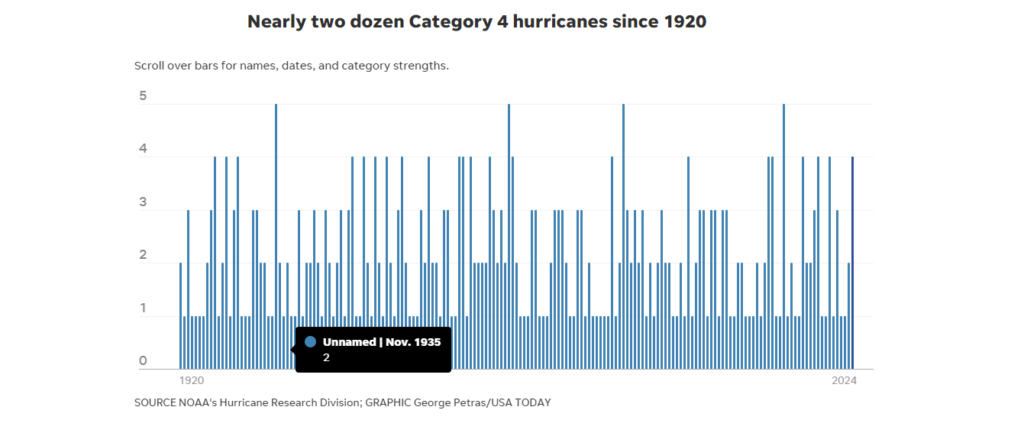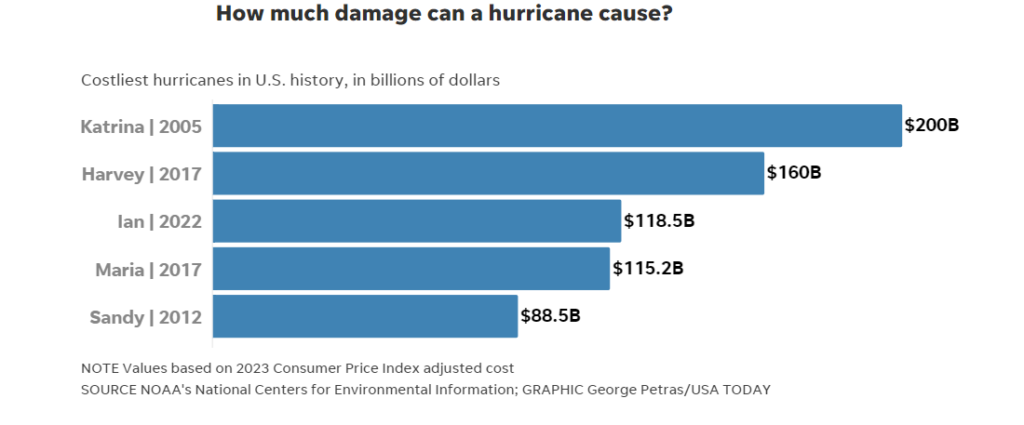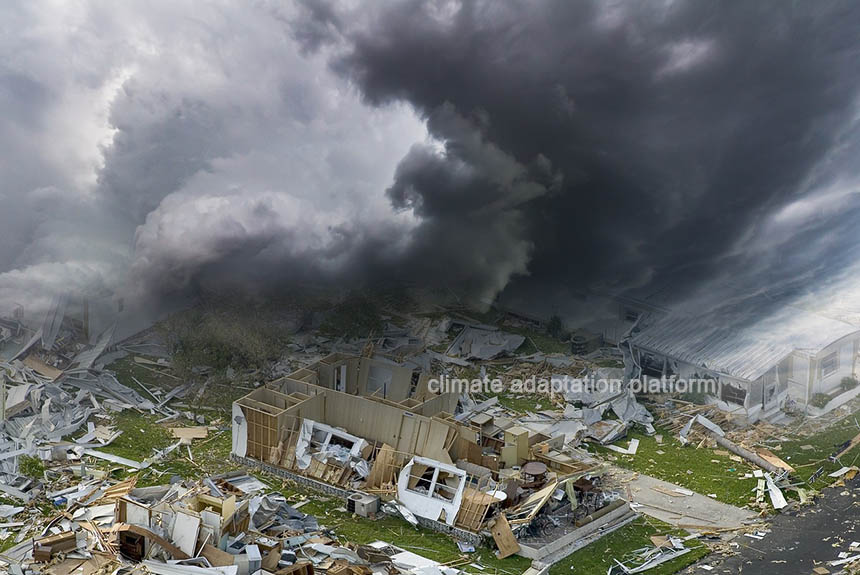Hurricane Helene’s landfall impacted southern US States: Florida, South Carolina, Georgia, North Carolina, Virginia, and Tennessee. It is the second-deadliest hurricane to strike the US mainland in 50 years, following Hurricane Katrina in 2005, which killed 1,833 people.
The Category 4 storm entered Florida’s Big Bend on 26 September, bringing 140 mph winds, the strongest and first Category 4 storm to hit the area since 1851 (Petra et al., 2024). It tore through Georgia, the Carolinas, and Tennessee, weakening as it moved inland and leaving a wake of destruction. As of 27 September, more than 4.5 million people in six states, including Tennessee and Virginia, have lost power.
According to the New York Post article, Helene “wiped off the map” the small town of Steinhatchee, a Gulf coastal community in the southern part of Taylor County.
The town was also overwhelmed by a 10-foot storm surge and 140 mph winds. About 90 miles southeast of the state capital, Tallahassee, few buildings were left standing, and the ones that were suffered significant damage the next day. The article notes that most of the town’s 500 residents evacuated the area and returned to find their homes and businesses destroyed.
In North Carolina, Helene’s impact is described as “biblical” by the BBC. The storm brought torrential rain and historic floods and mudslides. A more vivid picture of destruction came on Sunday, three days after it entered the county.
More than 400 roads are closed in the state, where 11 people have died. Homes have been destroyed, towns have been cut off, water systems are down, and hundreds of thousands are without power.
The death toll is climbing to 160 across six states as of the time of writing. The damage is estimated at between $95bn and $110bn.
The graphs from USA Today show the number of hurricanes that have made landfall in the US since 1920, along with their dates, category strengths, and damage costs.

Cost of damage of hurricanes in the USA

Climate change increases storm intensity
A 2020 study published in the Proceedings of the National Academy of Sciences finds that the number of tropical cyclones between 1979 and 2017 has increased globally. It notes that these increasing trends are consistent with expectations under warming scenarios.
A 2022 study published in Nature Communications investigates the explanation for this global increase in tropical cyclones’ rapid intensification, which often causes destructive hurricane landfalls.
The study concludes that “anthropogenically-forced climate change has already contributed to the observed, detectable increase in the proportion of rapidly intensifying hurricanes.” The study “highlights the immediate need to improve coastal resilience to prepare against these dangerous events.”
Kerry Emanuel, an atmospheric scientist at MIT who has studied how climate change can cause the rapid intensification of storms, says that rising temperatures accelerate a feedback loop between water evaporation and wind speed, which speeds up the development of hurricanes and raises their intensity (Kaplan et al., 2024).
Studies have shown that climate change has heightened the destructiveness of hurricanes by increasing their rainfall. Scientists know that air can hold twice as much moisture for every 10 degrees Celsius rise in temperature.
PHOTO NOTE: The image used in this post is for illustration only and not from the Hurricane Helene’s aftermath.
Sources:
Helling, S. (2024, September 28). Tiny Florida town ‘wiped off the map’ by Hurricane Helene’s wrath: ‘There’s nothing left’. New York Post. Retrieved from https://nypost.com/2024/09/28/us-news/tiny-steinhatchee-fla-wiped-off-the-map-by-hurricane-helene/
Petras, G., Loehrke, J., Padilla, R., & Zaiets, K. (2024, September 27). Maps show Hurricane Helene’s destructive path across Florida, Georgia. USA Today. Retrieved from https://www.usatoday.com/story/graphics/2024/09/27/hurricane-helene-damage-map/75408113007/
Looker, R. (30, 28 September). Thirty killed in one county after hurricane swamps North Carolina. BBC. Retrieved from https://www.bbc.com/news/articles/cly5d9y07e3o
McKay, R., Ax, J., & Hay, A. (2024, September 29). US southeast states clean up after ‘one of most expensive storms’. Business Day. Retrieved from https://www.businesslive.co.za/bd/world/2024-09-29-us-southeast-states-clean-up-after-one-of-most-expensive-storms-in-us/
Kossin, J., Knapp, K., Olander, T., & Velden, C. (2020, May 18). Global increase in major tropical cyclone exceedance probability over the past four decades. PNAS. Retrieved from https://www.pnas.org/doi/10.1073/pnas.1920849117#sec-2
Bhatia, K., Baker, A., Yang, W. et al. A potential explanation for the global increase in tropical cyclone rapid intensification. Nat Commun 13, 6626 (2022). https://doi.org/10.1038/s41467-022-34321-6
Kaplan, S., Osaka, S., & Stillman, D. (2024, 28 September). What Helene could signal about the rest of hurricane season, and beyond. The Washington Post. Retrieved from https://www.washingtonpost.com/climate-environment/2024/09/28/helene-storms-climate-change/



Leave a Reply